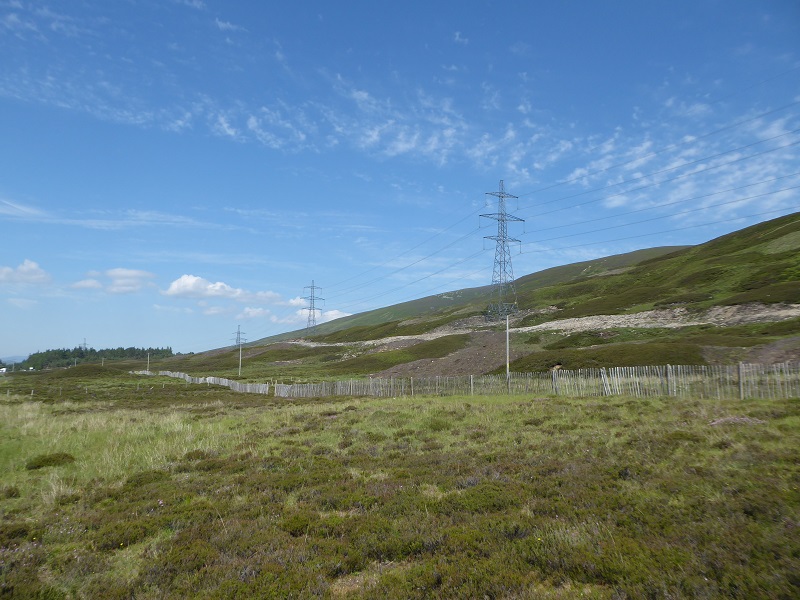
Most people travelling north over the Drumochter pass will have noticed the terrible scars across the hillside on the right after the summit. Many probably realise they are a consequence of the construction of the Beauly Denny powerline. Few will realise, unless they have read previous parkswatch posts, that this destruction has taken place in a Special Area of Conservation, a designation that is supposed to provide the highest levels of protection to the natural environment. Even fewer probably realise that the swathe of destruction extends 7.5 km south to Dalnaspidal because much of it is hidden from the A9.
Parkswatch has now been covering this destruction for over two years (see here for example) but still nothing effective has been done to restore the ground. This post explains why I am now writing to the Scottish Government about this and registering a formal complaint to the EC about the Scottish Government’s failure to uphold the Habitat’s Directive (as if we were still to leave the EC, any complaint would need to be registered by 29th March).
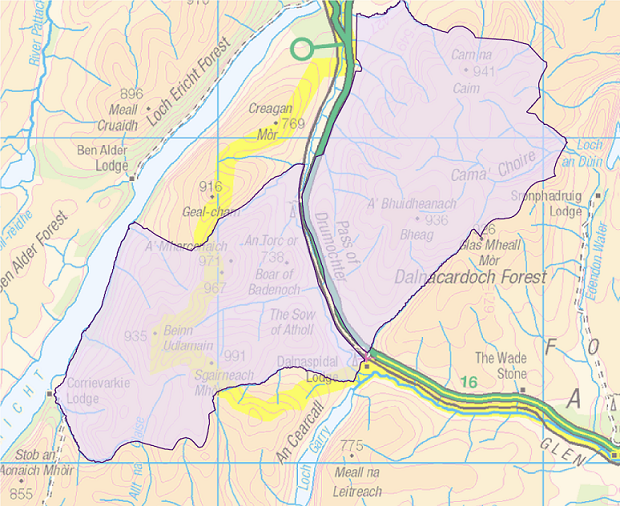
The land on either side of the A9 corridor forms part of the Drumochter Hills Special Area of Conservation, a European designation under the Habitats Directive. SACs are supposed to protect the natural environment from damage and, while Scottish Natural Heritage manages this on a day to day basis, the Scottish Government holds ultimate responsibility. At Drumochter, and in the case of the Beauly Denny powerline, the Scottish Government are more directly responsible than usual because THEY granted the planning consent and other public authorities, including the Cairngorms National Park Authority can only act in an advisory capacity.
A condition of that consent was that the land around the construction towers and construction tracks should be fully restored. This was fundamental to the Beauly Denny going ahead. Had the Scottish Government agreed anything else they would have opened themselves up to legal action under the Habitats Directive and the whole Beauly Denny project might have been stopped.
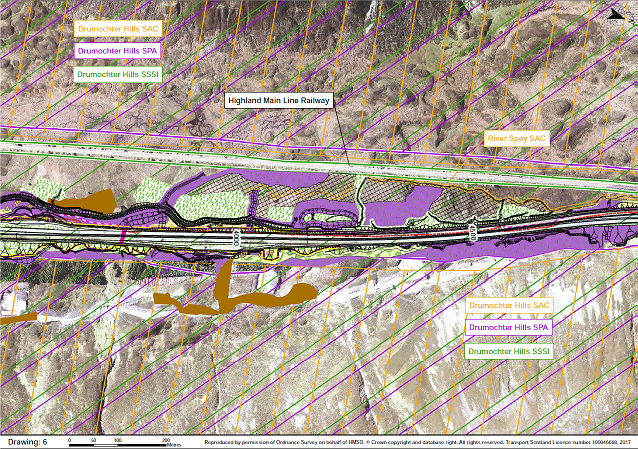
The potential power of the SAC designation to stop development is illustrated by the more recent A9 dualling project. The current A9 follows a corridor between the two side of the Drumochter Hills SAC. Transport Scotland has taken great care to ensure the new dual carriage remains entirely within the corridor and will not encroach on the SAC in any way. That is welcome. Transport Scotland’s plans however also provide more evidence for the destruction caused by the Beauly Denny. That they are proposing areas of peatland restoration within the SAC appears a tacit admission from the Scottish Government that serious damage has been caused. Why though has Transport Scotland, rather than Scottish and Southern Electric who constructed the Beauly Denny, proposed this? And why restore some areas but not all?
The photos/photomontages tell an even more powerful tale.
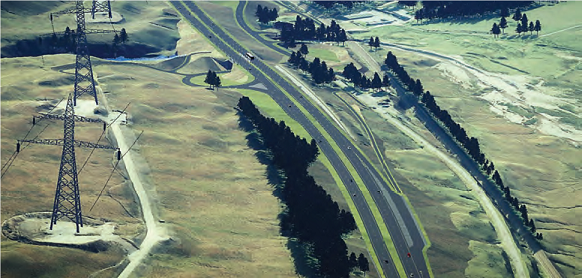
The damage that has been done to the Special Area of Conservation takes a different character south and north of Drumochter summit.
Dalnaspidal to Drumochter
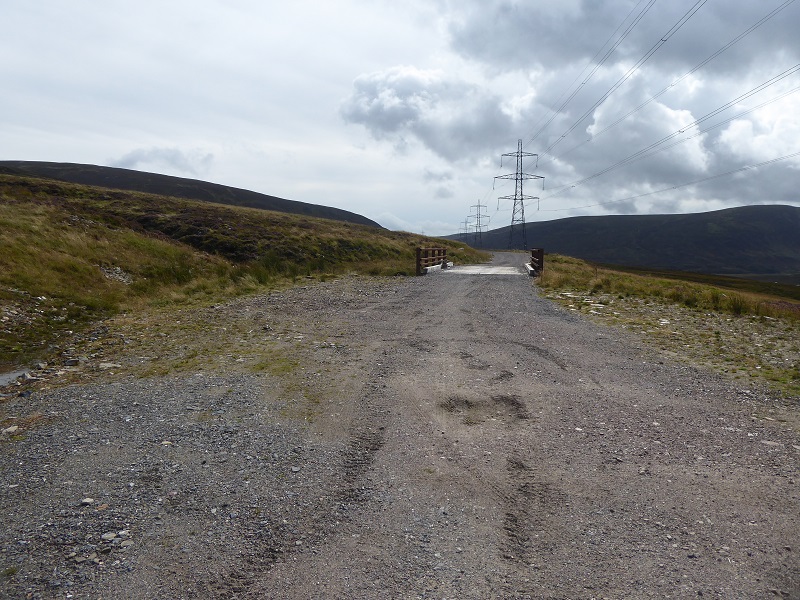
The main damage to the southern part of the SAC has been caused by the construction road being left in place.(see here), although there have also been failures to restore the ground under and around the towers. The Scottish Government’s Planning consent allowed for an “upgrade” to Wade’s military road which was then supposed to be fully restored. Somehow, in a manner yet to be explained, it was then just left. I understand from fairly recent contact with the Cairngorms National Park Authority that agreement has now been reached with SNH and SSE that the road should be narrowed to landrover track width.
That is a change to the original planning permission. In my view therefore there should be further public consultation from the Scottish Government, informed by scientific surveys, on whether this represents an acceptable loss of protected habitat.
Drumochter Summit to north Drumochter Lodge
North of Drumochter summit the issues are rather different. Attempts were made to remove the construction road but these have failed. The quality of the so-called restoration is appalling and the ground on either side of the construction track is in a far worse state than that south of Drumochter summit where the construction road has been left in situ. A few weeks ago I again asked the CNPA for a copy of last year’s monitoring report, which was due in the Autumn, but gather its not available yet. Nothing significant ill have changed however since I took these photos.
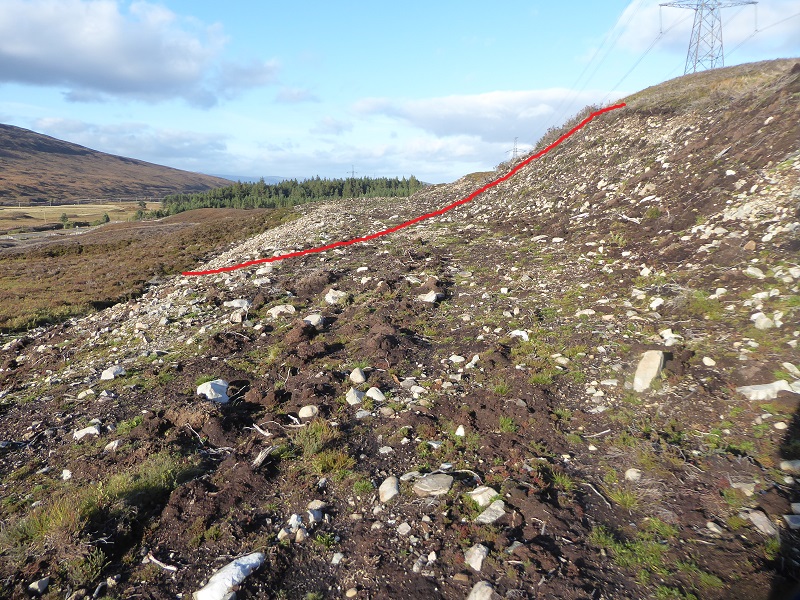
The planning consent required the original landforms to be restored. That has not happened.
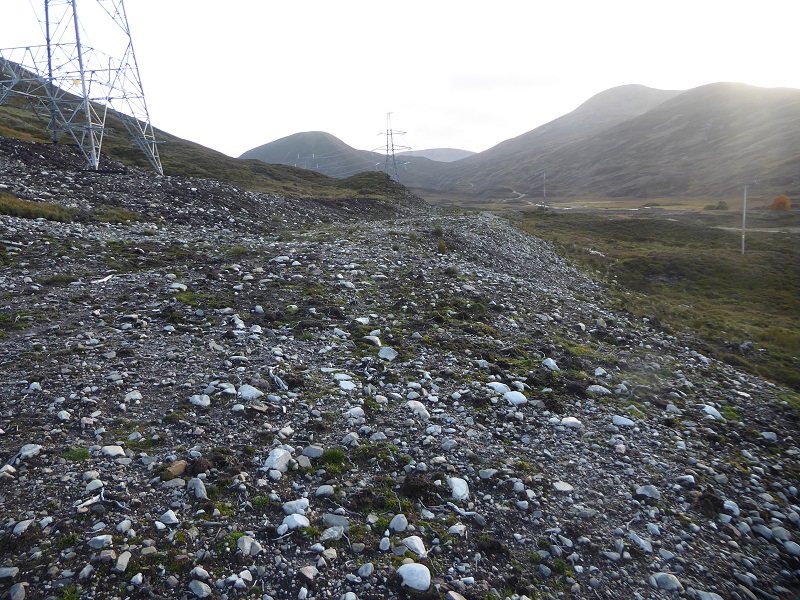
The alterations to the landforms caused by the creation of the temporary construction road have completely changed the ecology of this slope, changing both soils and drainage.
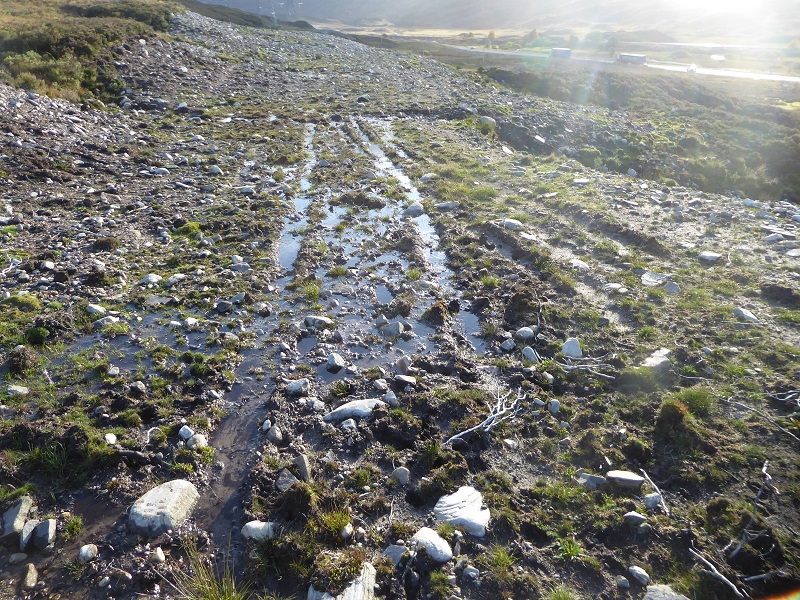
The flat bench across the hillside not only stands out as a scar, its an invitation to the estate to continue to drive vehicles here, doing further damage to the ground and preventing vegetation recovery. Note how the profile of the burn has not been restored either – you can see how it has cut through the ground on either side – but where it crosses the road the banks have been left flattened enabling vehicles to drive over it.
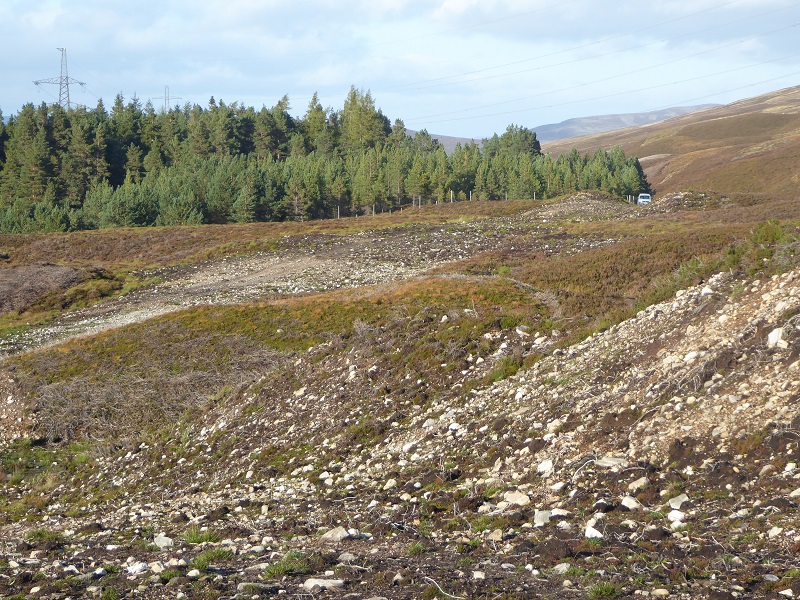
The Beauly Denny powerline and destruction associated with it moves out of the SAC by North Drumochter Lodge. Though still on ground designated a Site of Special Scientific Interest, that is not a European designation so cannot form part of a complaint to the EC. It is, however, something the Scottish Government should address.
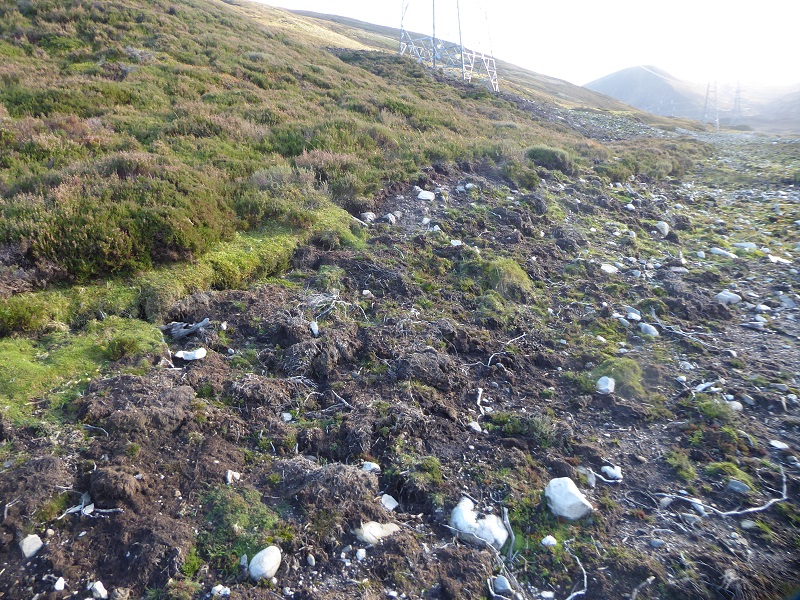
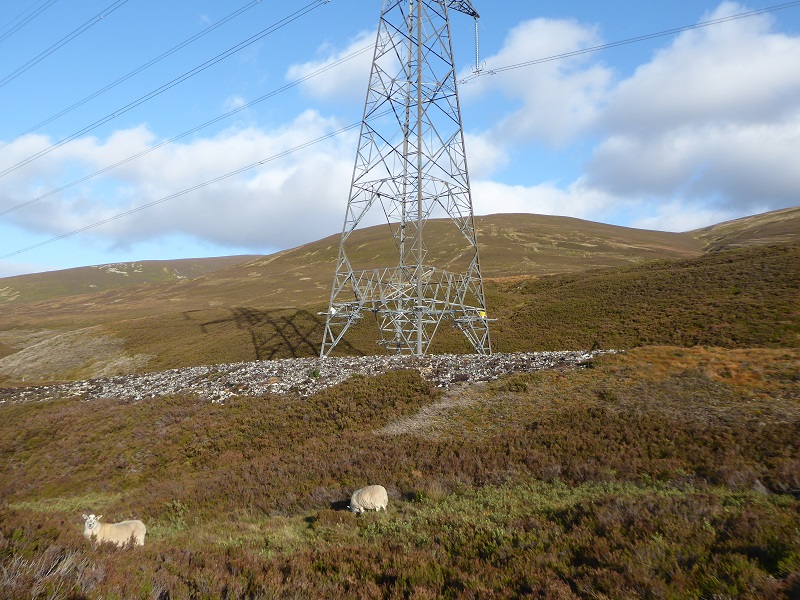
Unbelievably, sheep are still being grazed along the line of construction track, most probably as tick mops in an attempt to increase grouse numbers here. Its little wonder there has been so little vegetation recovery along the line of the track.
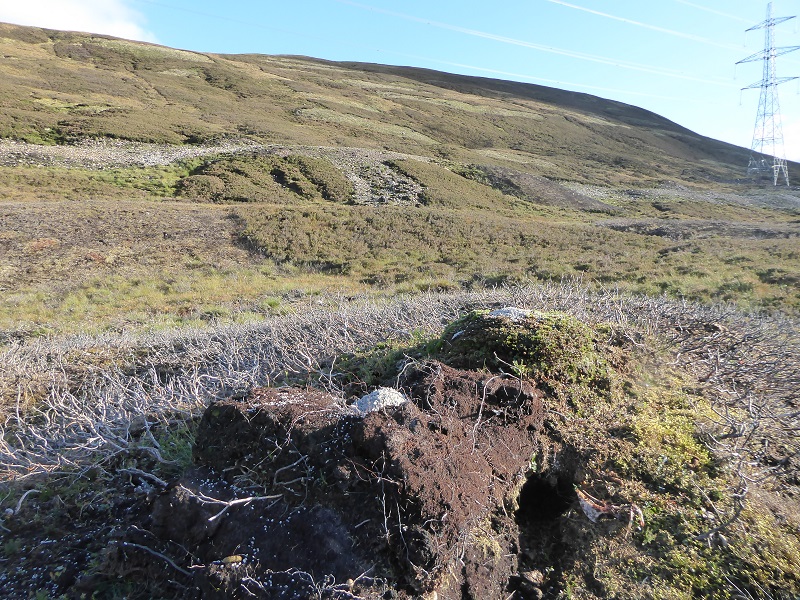
Continuing with further intensive grouse moor management along here before the vegetation has been fully restored is yet more madness. There appears to be no will within the Scottish Government to tackle the way grouse moors are managed even when the restoration of a SAC is at stake.

Further south a fenced enclosure has been created around a section of the former construction track, apparently in order to help reduce grazing pressure and allow the vegetation to recover. Unfortunately it has resulted in the creation of a NEW road!
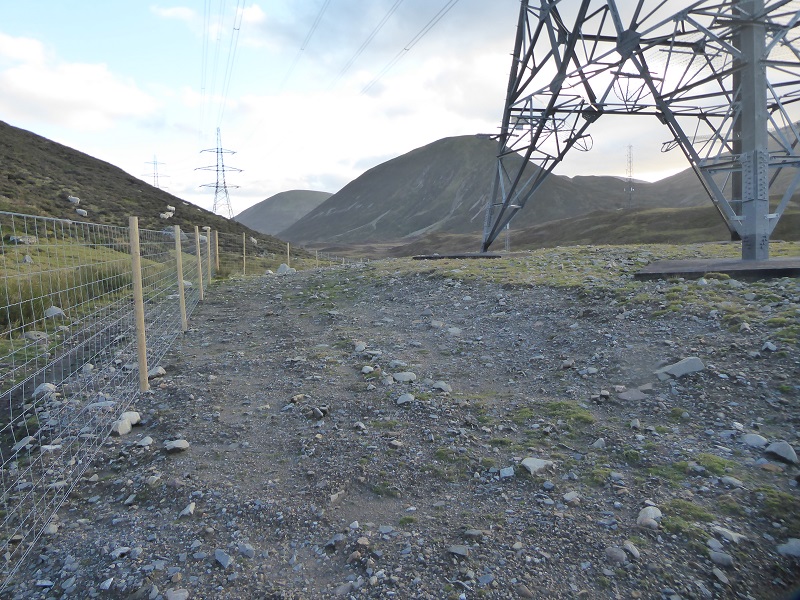
The enclosure covers a slightly raised area which is less affected by drainage from the slope above than the rest of the former construction track and probably always had more mineral soils. Compared to the ground about, this would be highly attractive to the sheep that still graze here. An alternative to the fence would be to have removed the sheep and to have stalked deer here regularly. Fencing this area is not going to address the problem just outside the fence on the left or indeed the rest of the construction destruction outside the enclosure.
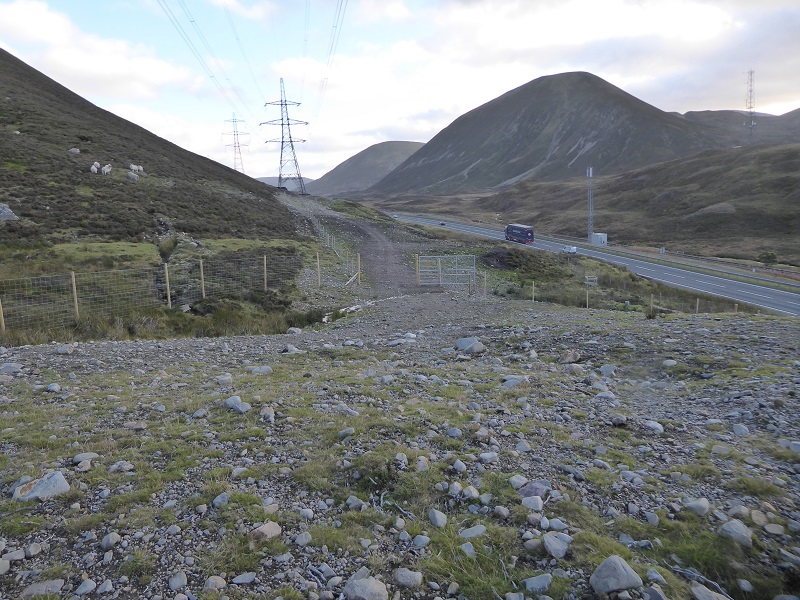
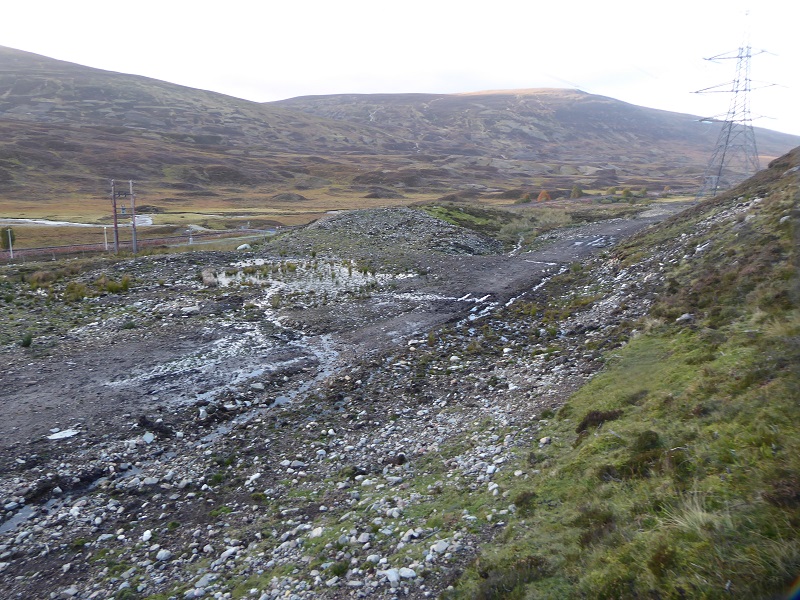
How could anyone possibly believe that this is an appropriate way to treat a SAC or count as restoration? That this has been allowed to continue for over four years tells you something about how much the Scottish Government, both civil servants and politicians, value the natural environment.
The wider picture and what needs to be done
The Scottish Government’s failure to ensure the Beauly Denny has been properly restored helps explain why poorly designed hill roads continue to be allowed to proliferate into almost every corner of our hills. The Government doesn’t appear to believe hill roads are an issue, even in our most protected areas. The Government doesn’t appear prepared to enforce planning conditions, even in our most protected areas. The Government appears to have no interest, where work does take place in the countryside, that that work is of an appropriate standard. In short this is a government that cares far more about developers, in this case SSE and its sub-contractors, than landscapes or habitats.
Its almost impossible for SNH and the Cairngorms National Park Authority – who have continually expressed concerns about the Beauly Denny restoration- to act in such circumstances.
Its time the Scottish Government was forced to change. I will be writing to the Minister for the Environment about this but registering a formal complaint with the EC might just be one way of ensuring her civil servants give this proper attention.
I strongly supported the Green MSP, Andy Wightman’s, amendment to the Planning Bill. This would have brought all tracks and roads used for sporting purposes under full Planning Control. It did not, however, start to address the wider problem as evidenced by what has happened at Drumochter. Its pointless bringing more hill roads into the planning system without statutory guidance which covers:
- where it is appropriate to locate roads and where not (e.g not in SACs or areas of Wild Land)
- obligatory standards for construction, repair and maintenance, and restoration
- the necessity of timeous enforcement
Get the framework right and then all you need to do is sort out the resources necessary to deliver it.

I wish you, Nick, every success with your complaint to the Scottish Government and the EU. Your photos show an appalling lack of enforcement of the planning conditions covering land restoration after completion of the new pylon line and a total disinterest in post-development restoration of the natural landscape by the Scottish Government. Regrettably, lack of enforcement of planning conditions is becoming more and more the norm and I believe this lack of enforcement emanates from the Scottish Government leaning on Planning Authorities to be lenient with developers – as clearly shown here.